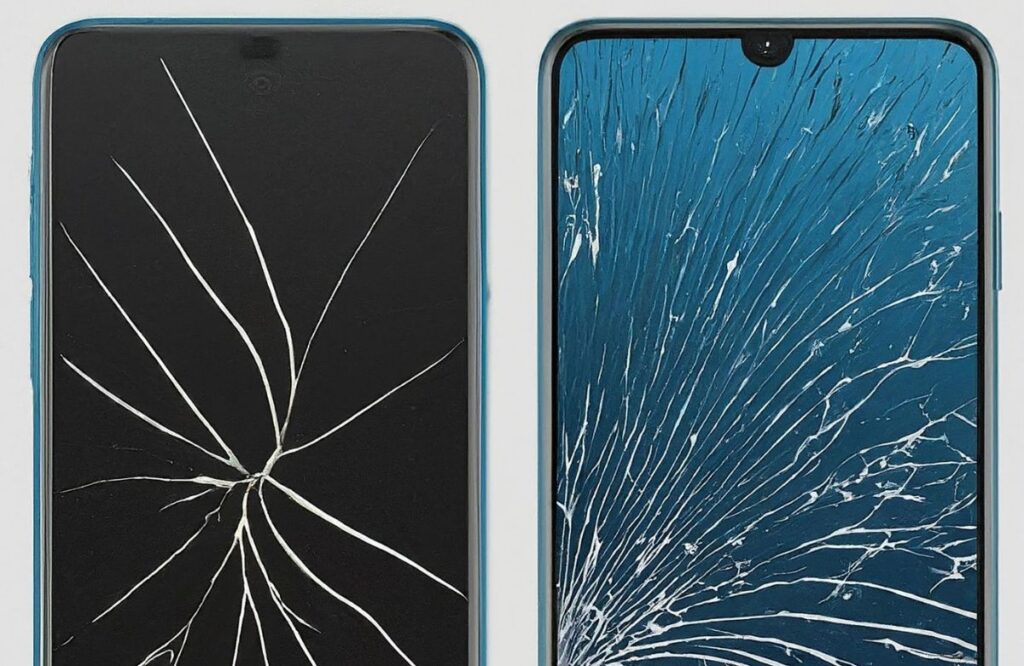Damaging your smartphone’s LCD can be the most concerning issue for users. A damaged LCD screen can lead to problems with functionality and visuals, as well as safety and structural issues. It may also void the warranty. However, learning about the causes of damage and precautions to save your LCD screen will ensure the safety of your phone. You can get this info from Wireless Waves Repair experts.
What causes LCD screen damage on the phone? Here are some points to know.
- Damage from Physical Impacts
- Water and Moisture Damage
- Phone Bends Due to Pressure
- Extreme Temperature Changes
- Defects Occur During the Manufacturing Process
- Your Phone is Badly Maintained
What precautions do you take to save your phone’s LCD screen?
- Buy a Screen Protector
- Invest in a Strong Phone Case
- Conduct Routine Maintenance
- Don’t Expose the Phone to Heat and Moisture
What Causes LCD Screen Damage on Phone?
The Liquid Crystal Display or LCD of your phone is a vital component that will enhance the overall performance and improve the deeper blacks, brightness, and richer colors. These LCD screens are more responsive than others, with sharp and clear images. However, various reasons can cause damage to these screens. The common causes of LCD screen damage on phones can be explained below.
1. Damage from Physical Impacts
Some smartphone users unintentionally drop their phones or let them slip, resulting in cracks, fractures, or even deformation of the LCD screen. These incidents will lead to structural damage, dead pixels, and image distortion, which could affect the display.
2. Water and Moisture Damage
Water or moisture entering the LCD screen is a hazard because it harms the fragile parts. This results in a blurred appearance, fogging, discoloration, or screen failure. Even the smallest quantity of moisture can get into the device. Water can reach the inner phone part through charging ports or headphone jacks, which are the weak points. This is one of many primary factors leading to LCD screen damage on smartphones.
3. Extreme Temperature Changes
Extreme heat or cold can also affect LCD screens. Heat distortion can result from overusing the phone, which leads to liquid crystals. This results in image distortion or damage.
Extreme cold can diminish the display’s response time and performance.
4. Phone Bends Due to Pressure
Another reason for LCD screen damage is that phone users apply excessive pressure or weight to the device. This pressure is applied when you have placed the device in your tight back pocket. You can check if the screen is damaged by inspecting for dead pixels, misplaced colors, or cracked screens.
5. Your Phone is Badly Maintained
Poor maintenance is another reason for smartphone malfunctions with LCD screens. The screen can be easily affected by the lack of cleaning, using a rugged cleaning cloth, or exposing the device to harsh surroundings. This causes the screen to wear and tear easily and develop display issues.
6. Defects Occur During the Manufacturing Process
In other cases, the lack of proper calibration of the LCD screen can lead to the malfunction of the liquid crystal display screen. These graphics issues are disabled pixels, color mismatches, or other inconsistencies. They will cause the screen to lose quality and functionality.
Tips for Preventing LCD Screen Damage
The LCD screen is the most vulnerable part of the phone, and its damage might affect its usability and visual function. Here are some practical tips by Wireless Waves Repair experts to safeguard your device’s screen.
1. Invest in a Strong Phone Case
You can also invest in a strong phone case that adds another layer of protection to your phone. These cases can save your phone from structural harm by accidental drops, bumps, and impacts. Try to find a case with durable material to eliminate the causes of LCD damage on your phone.
2. Buy a Screen Protector
The first thing you can do is buy a high-quality screen protector. This is one of the inexpensive and effective ways to prevent screen breakage due to scratches, cracks, and other damages. Tempered glass protectors are the best type of protection while maintaining screen clarity and touch sensitivity.
3. Conduct Routine Maintenance
Clean your phone’s screen and case regularly with a cleaning solution to remove all the dirt, dust, and debris.
- Use a soft, lint-free, or microfiber to carefully wipe off the screen and case’s surface.
- Avoid using harsh chemicals or scrubby materials, which could scratch or cause damage to the LCD screen.
4. Don’t Expose the Phone to Heat and Moisture
Remember not to leave the phone in direct sunlight or any high temperature and humidity. The LCD screen can get deformed due to heating. Meanwhile, moisture penetration can cause water damage and functional issues. Don’t leave your phone in the heat or near the swimming pool or bathtub to ensure maximum safety.
Conclusion
The LCD screen is a crucial smartphone feature. It needs proper care to stay smooth and keep working. Finding the causes of LCD screen damage on phones and taking precautions will help your phones last. It will also ensure they function smoothly in the long run. You can also contact experts at Wireless Waves Repair to learn more about the causes of LCD screen damage.
Frequently Asked Questions
Can phone LCD damage be fixed?
The damaged LCD screen can be fixed depending on factors like repair options and the extent of the damage. The technicians learn what causes LCD screen damage on the phone and resolve the issues accordingly.
What causes damage to the LCD screen?
The main reasons for LCD screen damage include bending, impacts, temperature swings, water, inadequate care, and defects.
Does touching the LCD screen damage it?
If you touch the screen typically, it will not damage it. However, excessive pressure will create scratches on the screen and damage it.

